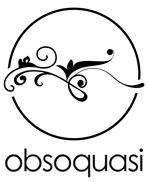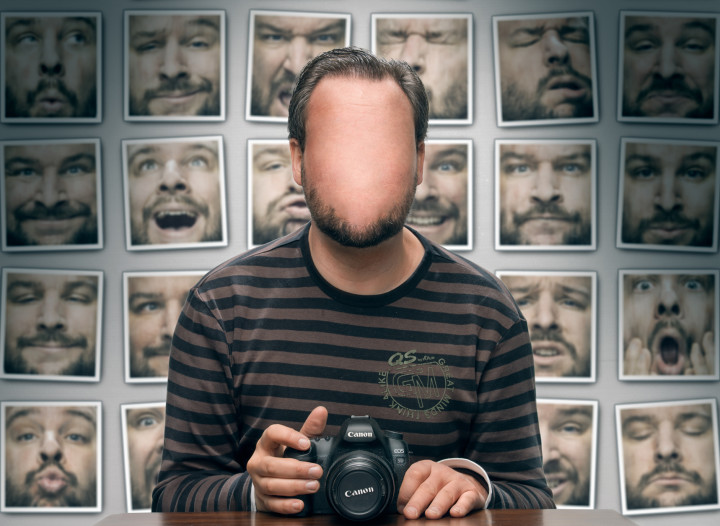Welcome to The Age of Copycats
In the last 5 years, an alarming trend has emerged. A trend that not only affects the artistic community but the population as a whole. A trend that is a side effect of today’s commodity of information, where the user craveth and the internet giveth – for free no less. We all realised that having this abundance would doubtlessly devalue the individual information goods, but did we really expect it to happen in such a drastic way? How did we get here? Welcome to the age of copycats.
The Value of Being an Artist vs. the Value of the Artwork
Why go through the effort of creating, when you can just take somebody else’s work. Why paying, when you can steal it. Why giving credits, when not giving credit makes you look better.
It has never been easier to get into art. The necessary tools are becoming cheaper and cheaper. The techniques are being taught for free on Youtube or available in the form of attractively priced tutorials. Wether it’s photography, 3D, digital painting, filming or writing, almost anyone can dive into these artistic fields. That’s a good thing, right? A sort of democratisation of art. And I really mean it, because ultimately everyone can use some art in their life. The problem is though that so many people are in it not for the sake of art, but for the sake of calling themselves artists.
Social media has created a world of self-promoters, where we are constantly “selling” a product, ourselves. Or rather, the best version of ourselves that we can produce. By now everyone is painfully aware of the fact that everyone around you just seems to be much more interesting and active than us. Being an artist feeds perfectly into a self-promoter’s lifestyle. Not only is it absolutely crucial for artists to self-promote, they simply appear to have much more interesting things to say, to do and ultimately, to be.
Creating art, “true” art, is very difficult. Because true art demands a number of attributes that are extremely hard to come by: Originality, endurance and a personal style. And that’s a problem of course. It’s all fun and games, as long as creating art isn’t becoming a chore, right? There isn’t necessarily anything wrong with that “just-wanna-have-fun” approach! But in the absence of originality a number of things are destined to happen and all of them have to do with our arrival in the age of copycats.
Copied Visions
He probably got it from someone else too…
Sitting down and thinking of something original, clever and insightful is tough. Mainly because most of us aren’t used to face that demon. We don’t just sit and think anymore – we are information junkies. A steady trickle of information (in whatever form) always has to be present or we get withdrawal symptoms.
Instead of sitting and thinking, it’s much more enjoyable to browse other artists’ work and pick ideas and concepts that we like (“I’m going to do a levitation photo too!”). This borrowing of ideas promises a shortcut through the head ache and soul ache of coming up with original ideas. People who take these shortcuts often justify it by saying, everything has been done before anyway or even worse by quoting Pablo Picasso’s “good artists copy; great artists steal”, which, by the way, he never actually said.
But the worst thing about stealing other people’s visions is that the stealing artists feel in no way obliged to mention the original artist, because, well … “He probably got it from someone else too” or some similar bad excuse. All that matters to these “commodity artists” is that they create something seemingly creative in order to reinforce their self-imposed image as an artist. I admit that I’m struggling to accept this mindset in others, as you can probably tell by the fact that I’m writing this article…
Copied Art Elements
An artwork that’s not 100% your own
To put it buntly, using stock photos, stock videos, audio samples or in fact any kind of artistic element of an artwork that you haven’t created yourself, all of this has one important consequence: The final artwork is not 100% your own. I do realise that it’s not actually that simple though. The question of “when is an artwork your own?” creates some philosophical challenges. Let’s just demonstrate this with a kind of absurd example: When you shoot a photo of a mountain, is that photo yours? After all, you didn’t create that mountain. Following this train of thought, you could probably exhaust all claims of ownership in any work of art…
However, to me, there is one line in the sand that I’m drawing, for myself at least. As a photographer it would be very easy to work with stock photos and it would probably speed up my workflow tremendously. However I just would feel the same sense of kinship with my work and here is why.
Each project is a journey, metaphorically speaking. And each image element I need to create will be another, separate part of to that journey, like a sidestory in a movie plot. These side stories prolong the journey, but along the way the project gains in specificity, character and tone. Along the way, I become part of that journey and the projects growth becomes my growth as well. I’m not a parent, but I imagine this feeling is part of watching one’s child grow up.
Maybe your mileage varies and that’s okay too. Just again, if you use other peoples artistic elements or components (like stock images), please, always show fairness and mention the stock source. “Hold on, Mr. Obso-Something-Copycat-Guy, I purchased the licenses for these stock photos – I’m entitled to use them without mentioning the stock agency. I’m no billboard!” Correct, you’re not. But you’re not being transparent to your viewers either. By posting your image without mentioning stock photos, you are willingly having them believe, you created all parts of the image. But you haven’t – you took a shortcut. You probably did a great job with integrating that shortcut in your image and the result looks great. But it’s not about that. It’s about you being honest about your own work.
I think the thing that stings me most about this discussion, is the lack of sensibility of most people towards this subject. But maybe it becomes a little clearer if we look at was has happened in the music industry in a time span of only 15-20 years. If you’re over 30, you’ll probably remember the times where “good music” was about musical artists, writing and performing their own songs. You liked an artist, because you appreciated his individual artistry. Today music is about producers, dj’s, sampling, ripping off songs, auto-tune, unknown songwriters in the shadow of huge singing stars, covers of covers of covers. Pardon my saying so, but music has been sucked dry of all the good juice. I’m exaggerating of course, but sadly the artists that suffer most from this new age in music are the musicians that still try to stay genuine, perform their own heart-felt songs and seek their own audience without the overbearing dominance of a record label. They work the hardest and get the least recognition for it. This is exactly what’s happening in visual art now and nobody seems to be aware of it…
Copied Artworks
Creation becomes curation.
If both of us didn’t agree on the question wether it’s okay to use stock images without mentioning it, I’m sure we can agree on the despicableness of this last and ultimate brand of copycat: The artist who doesn’t create but steals whole works of art and proclaims them his own. Just last week we’ve seen an example, where Swiss “photographer” Madeleine Josephine Fierz has been
caught submitting another photographer’s images to two several international photo contests. Or there is the other recent example of the
faux war photographer. Or this prominent example of Richard Prince, printing other peoples instagram photos and
sellling them for almost 100’000 $. These are just three prominent examples of this ultimate trend in the age of copycats. While this trend may appear like utter laziness to us, it’s well possible that some time in the future the word portfolio won’t mean “works you created” but rather “works you curated”.
The same trend can already be observed in journalism, where major newspaper organisations are being bought and thrown into a big “new media machine” where the journalists are expected to spit out daily if not hourly news bits. No time to research, to reflect, to fact-check. The click bate articles must flow!! Needless to say, that this is very dangerous to the credibility of the news media and consequently to our ability to stay informed of what goes on in the world around us.
The same thing could happen in art. No, the same thing WILL happen in art if this trend continues. Already it has become extremely difficult to battle international copyright claims. I’m sure many of you have their own stories of their work being stolen. I still gnash my teeth, when I think about that book cover in Italy with my photo on it, where neither my name is mentioned in the book, nor have I been paid or asked for permission.
What Can We Do As Artists?
Let me propose a general etiquette for publishing and sharing your artwork:
- If the image concept is copied from somebody else – write “concept by XYZ”
- If the image concept is inspired by somebody else – write “inspired by XYZ”
- If you are using stock images – write “stock images by XYZ”. Also make sure you have the actual usage rights to these before publishing your artwork!
- If it’s not even your own image – then don’t post the image, but instead share the original image and optionally let people know what you love about it. Never post somebody else’s work without credits. It’s the worst form of image stealing!
- If you see someone stealing images or concepts without proper credits, politely ask them to add proper credits. Give them the benefit of the doubt – don’t immediately start accusing them of theft. Chances are, they’ve just forgotten and will gladly comply.
- If you see somebody being attacked for sticking up for this etiquette, give them your support. Stand up for fairness in art!

Final words
I truly believe that the changes mentioned in this article have come about slowly and social media has a very large part to play in it. But it’s not too late to safe originality and fairness.
Creating original work is hard. Sometimes it takes months to come up with one great concept and then refine it until it truly shines. But the universe is full of these yet untold stories. And as artists it’s our privilege to look for them and make them our own.
Just as important as originality is fairness. If you create something that inspires others to create similar artwork, then you’ve achieved something wonderful! There is nothing wrong with being inspired – far from it!! But be thankful to the original artist and show your appreciation with proper credits. Showing respect is not a sign of weakness and neither will it diminish your work. Your respectfulness will be seen as a sign of strength and maturity.



